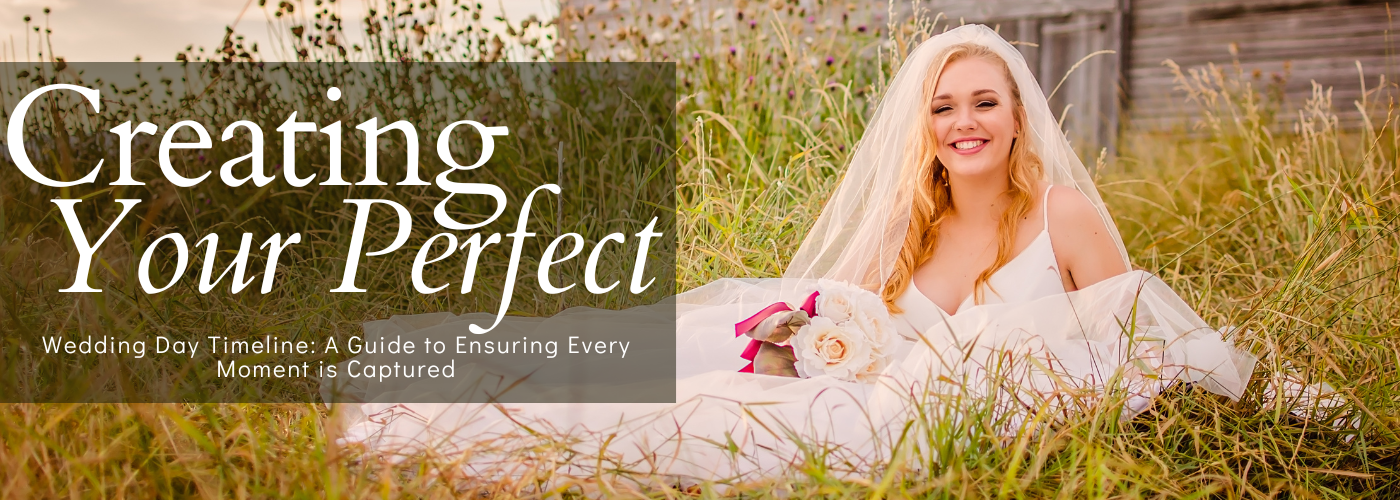Creating Your Perfect Wedding Day Timeline: A Guide to Ensuring Every Moment is Captured
When planning your wedding, one of the most important tools you can create is a well-structured timeline. Your wedding day is full of special moments, from the first look to the final dance, and a thoughtfully planned timeline ensures you, your loved ones, and your photographer can make the most of each one. Here’s why your timeline matters, how to put one together, and why sharing it with your photographer is essential.
Why a Wedding Day Timeline is Essential
A wedding day can be a whirlwind. With a well-planned schedule, every activity has its moment, creating a relaxed, smooth flow from one part of the celebration to the next. Having a timeline also ensures:
You enjoy each moment with minimal stress.
Vendors work in sync to create a seamless experience.
Your photographer captures all key events without missing a beat.
Building Your Wedding Day Timeline
Creating a timeline might seem overwhelming, but by breaking it down into key moments, you can map out a day that’s both organized and enjoyable. Here’s a sample outline to consider:
- Preparation (2-3 hours)
Hair and Makeup: Plan 1-2 hours, depending on the bridal party size and hairstyle complexity.
Getting Dressed: Allow 30 minutes for dressing and any last-minute touch-ups.
Detail Shots: Plan a time for your photographer to capture details (rings, dress, invitations, etc.) before things get busy.
Tip: Have everyone ready about 30 minutes before the first look or ceremony to allow for last-minute adjustments.
- First Look and Pre-Ceremony Photos (30 minutes – 1 hour)
If you’re doing a first look, schedule about 15-20 minutes for this special moment.
Plan an additional 30-40 minutes for any family or bridal party photos you’d like to capture before the ceremony.
- Ceremony (20-60 minutes)
Timing will depend on whether you’re having a short civil ceremony or a longer religious service.
Inform your photographer of specific rituals or traditions so they’re ready to capture those highlights.
- Post-Ceremony Photos (30-60 minutes)
Immediately after the ceremony, take 30-60 minutes for family and group photos.
Your photographer can guide you on how to arrange these photos efficiently.
- Reception Timeline
Cocktail Hour (1 hour): If you’re taking post-ceremony photos, plan for a cocktail hour where guests can mingle.
Grand Entrance and First Dance (15-20 minutes): Schedule your entrance and first dance soon after guests are seated.
Toasts and Dinner (1-2 hours): Plan speeches in between courses, giving guests time to enjoy their meals.
Family Dances: If you plan on having a parent dance or other family dances, schedule these just after dinner.
Party & Open Dance Floor (2-3 hours): Let the celebration begin! Work with your DJ or band to create a playlist that keeps the energy high.
Final Send-Off: Schedule a formal send-off if you’re planning one.
The Importance of Sharing Your Dance Music List
The music at your wedding, especially for important dances, brings the day to life in a way that words can’t. Sharing a list of planned songs with your photographer can make a huge difference. Here’s why:
Capturing Genuine Reactions: Knowing the exact song for your first dance or parent dances allows your photographer to be ready for meaningful moments, capturing your reactions as the music starts.
Planning for Emotions: Some songs have special significance, so your photographer can prepare to capture the emotional details—tears, laughter, and all.
Coordinating the Flow of Events: By sharing the order of events and dance songs, you’ll help the photographer prepare for when to switch between candid and posed shots.
Final Tips for a Smooth Wedding Timeline
Communicate with Vendors: Share the final timeline with key vendors, including your photographer, videographer, planner, DJ, and caterer.
Allow Buffer Time: Build in extra minutes between major events for unexpected delays.
Stick to What Matters: Your day is about you. Prioritize the moments and people that mean the most, and don’t stress if every single detail isn’t perfect.
By creating and sharing a detailed timeline, you’re setting yourself up for a smoother, more relaxed day that your photographer can capture perfectly.

